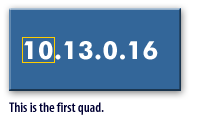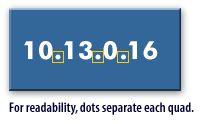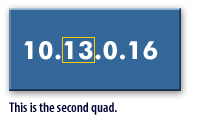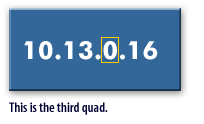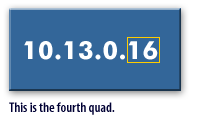Parts of the IPv4 Address
Each network running TCP/IP must have a unique network number, and every machine on it must have a unique IP address.
It is important to understand how IP addresses are constructed before you register your network and obtain its network number. This section describes IPv4 addresses. For information on IPv6 addresses, see "IPv6 Addressing".
The IPv4 address is a 32-bit number that uniquely identifies a network interface on a machine. An IPv4 address is typically written in decimal digits, formatted as four 8-bit fields separated by periods. Each 8-bit field represents a byte of the IPv4 address. This form of representing the bytes of an IPv4 address is often referred to as the dotted-decimal format.
The bytes of the IPv4 address are further classified into two parts: the network part and the host part.
The IPv4 address is a 32-bit number that uniquely identifies a network interface on a machine. An IPv4 address is typically written in decimal digits, formatted as four 8-bit fields separated by periods. Each 8-bit field represents a byte of the IPv4 address. This form of representing the bytes of an IPv4 address is often referred to as the dotted-decimal format.
The bytes of the IPv4 address are further classified into two parts: the network part and the host part.
Parts of an IP address
